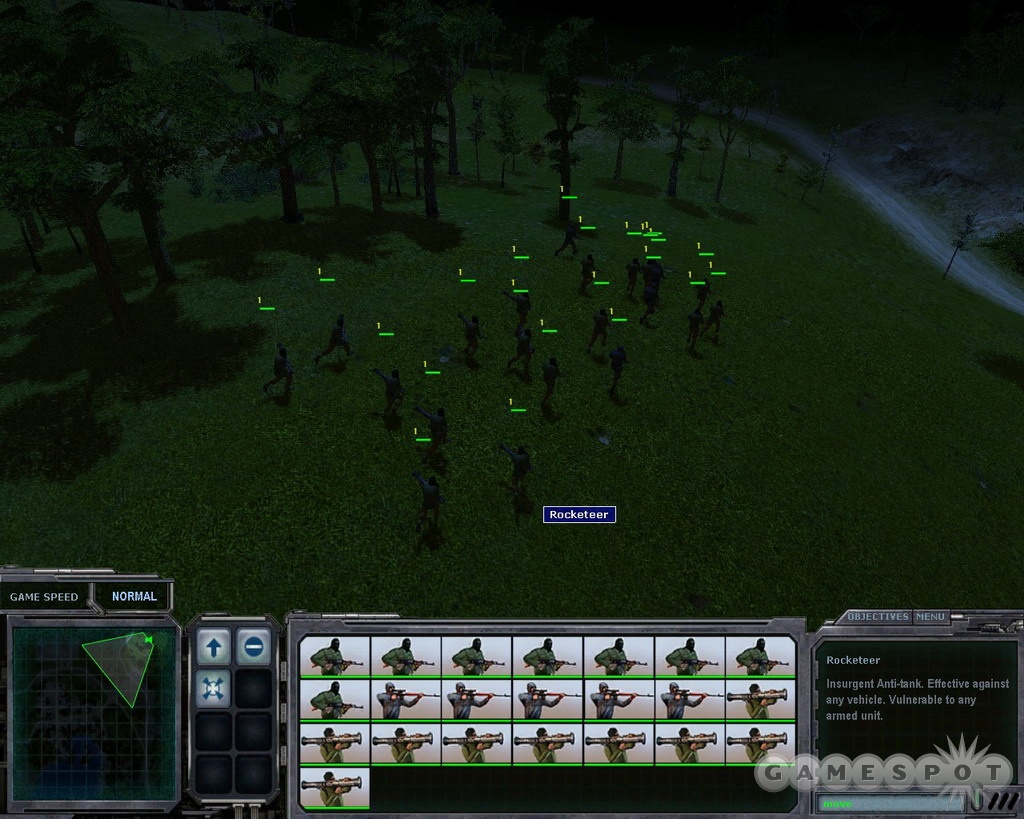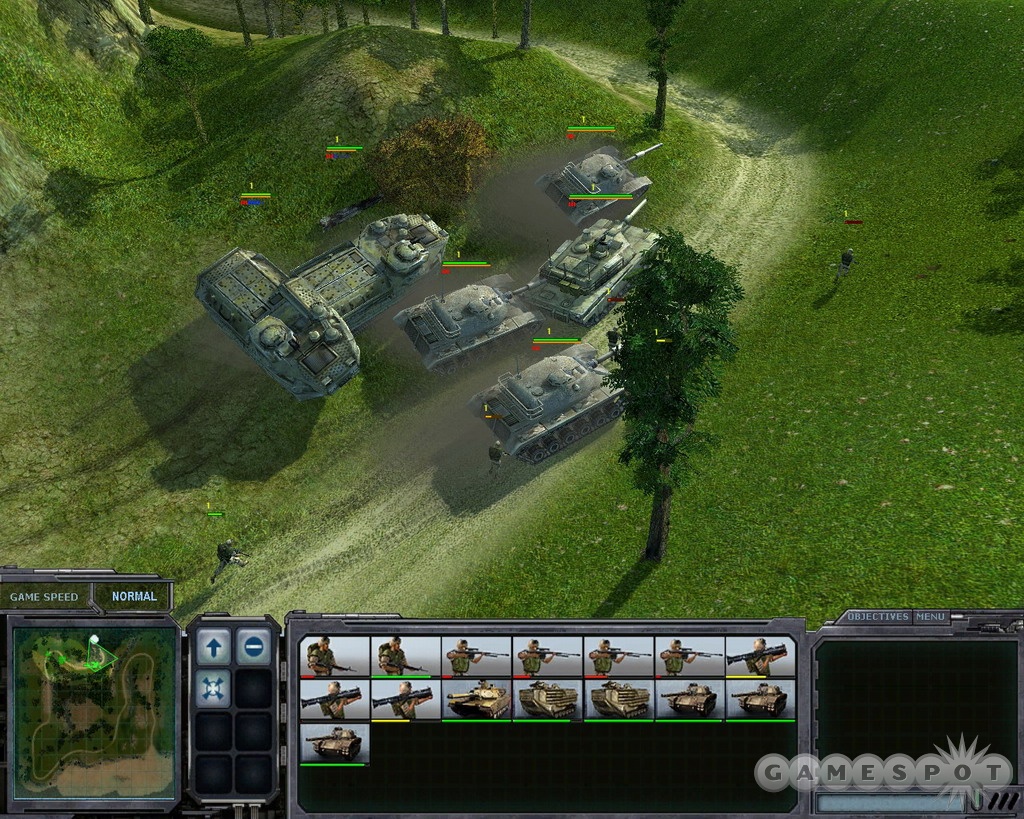Settle into a real-time strategy game called Alliance: Future Combat and you naturally expect a little sci-fi. The name of Serbian developer Gameyus Interactive's wannabe epic evokes thoughts of cataclysmic battles taking place many years from now, a feeling emphasized by a box emblazoned with space-age soldiers and jets that look like Vipers, as well as a plot about genetic engineering. But not so fast. All of this "future combat" actually takes place in the distant year of 2008. All of the fighting is done by contemporary-looking soldiers and tanks. And the gameplay takes you back in time to the days when RTS programmers had yet to figure out such intricacies as pathfinding, level design, and visual presentation.

The absurdity of the plot is the least of this game's flaws. And that's saying a lot when you consider that the storyline deals with the United States setting up a secret military base to make genetically enhanced supersoldiers in a new Middle Eastern nation called the Democratic Republic of North Dzombystan (DRND). Granted, there have been goofier stories in other RTS games, and the two campaigns that follow the saga from the perspectives of the US and the DRND are a proven staple of the genre. But no other games have ever tried to present such an outlandish saga taking place a mere 14 months from the present. Gameyus might as well have set the game next Tuesday, robot tanks and all. This absurd saga is all you get, too, as there is no skirmish option (unless you count the ability to replay finished campaign missions) and no multiplayer modes.
At any rate, the ridiculous story doesn't matter much once the game begins, as the plot isn't developed at all. You're given the barest of details when it comes to motivations, and you're typically plopped down in a generic RTS map in each mission and told to go from point A to point B, killing everybody you meet along the way. There is neither resource gathering nor much else to manage, aside from the regular appearance of reinforcements. Instructions are spectacularly vague, though, so it's probably good that the gameplay is so simplistic. Mission commanders appear in little pop-ups at the top of the screen and issue orders that are always either complete nonsense due to the game's translation problems ("Learn few things!"), or so terse that it's better to ignore them entirely and suss objectives out on your own.
But doing so isn't all that easy. Almost all of the maps in Alliance are composed of pixelated, muddy terrain (that, incidentally, looks more like Western Europe than anything in the Middle East) and grimy towns that make it very tough to spot enemy units. Soldiers are so tiny and dark that they vanish into the landscape like camouflage-wearing Waldos. Vehicles like personnel carriers, tanks, and mortar trucks are a bit easier to eyeball but still blend into the background, as they are clothed in slate gray and brown. Many missions take place at night, as well (particularly in the DRND campaign), which doesn't exactly improve the situation.
Making matters even worse, the fog of war has been cranked up so high that it is actually more of a thick pea soup of war. This visibility issue is a one-way street, because it only affects the Americans. Even though the DRND troops remain invisible to you until you're practically falling over them (which makes a bit of sense, as they're supposed to be terrorists), they have no problems spotting you from long range and opening fire. So when playing the Yanks, you're constantly hammered by rockets and machine-gun fire from enemies that you can't see and can't target.

Missions are constructed around these blind ambushes. Levels are typically artificial constructs where you need to follow a winding, narrow path from the start to the finish and deal with lots of enemy units set up to bushwhack you around every turn. Cutting across country is often flat-out impossible, due to impassable terrain (although a lot of these verboten sections sure look like gentle, rolling hills) and atrocious pathfinding. Go off-roading and units instantly start playing demolition derby. They slam into each other, backtrack and stop for no apparent reason, and even ignore commands in tight spots. Coordinating an attack across fields or hills is pretty much hopeless, as is even moving across the map in an orderly fashion. Even if the controls cooperated, there are no formations and no way to make speedy units keep pace with slower ones. So confusion is difficult to avoid unless you micromanage every step of the way. And most missions feature such a staggering number of well-armed enemies (you'll quickly grow to despise the rocket-propelled-grenade-armed rocketeers) that victory is extremely hard to achieve.
Finally, just to rub it in a little bit more, Alliance crashes and/or locks up Windows on every exit and features the most annoying death "Arggghhhh!" ever included in an RTS. You don't need to look back from the far-flung future of 2008 to know that this game is going to be remembered as one of the worst of the year.